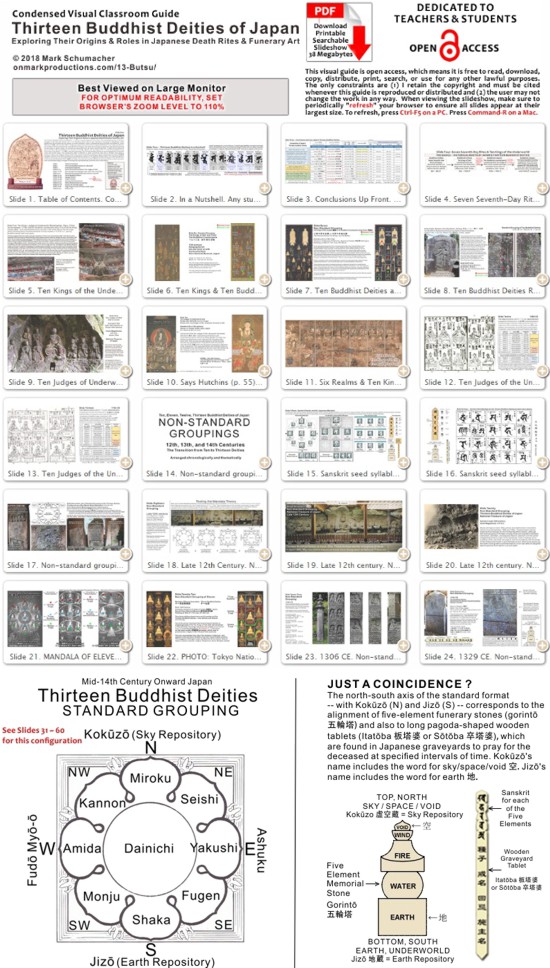Thirteen Buddhist Deities of Japan — Exploring Their Origins & Roles in Japanese Death Rites & Funerary Art. Over 70 annotated photos, copious reference notes, 84 slides. July 2018.
Jump directly to the Condensed Visual Classroom Guide to Japan’s Thirteen Buddhist Deities. The Thirteen Buddhist Deities (Jūsanbutsu 十三仏) are a purely Japanese convention. The standardized group of thirteen emerged in the mid-14th century, but in its formative years (12th & 13th centuries), the group’s composition varied significantly and included only ten, eleven, or twelve members. The group is important to all schools of Japanese Buddhism. Even today, the thirteen are invoked at thirteen postmortem rites held by the living for the dead, and at thirteen premortem rites held by the living for the living. As shown herein, the thirteen are associated with the Seven Seventh-Day Rites 七七斎, the Six Realms of Karmic Rebirth 六道, the Buddhas of the Ten Days of Fasting 十斎日仏, the Ten Kings of Hell 十王, the Secret Buddhas of the Thirty Days of the Month 三十日秘仏, and other groupings. The Thirteen provide early examples of Japan’s medieval honji-suijaku 本地垂迹 paradigm, wherein local deities (suijaku) are recognized as avatars of the Buddhist deities (honji). This classroom guide is unique in three ways: (1) it presents over 70 annotated images, arranged chronologically and thematically, from the 12th to 20th century; (2) it offers four methods to easily identify the individual deities; and (3) it provides visual evidence that the thirteen are configured to mimic the layout of the central court of the Womb World Mandala 中台八葉院. █ KEYWORDS. 十三仏 or 十三佛・十王・七七斎・七七日・中有・中陰・六齋日・六道 ・十斎日仏・三十日秘仏・本地垂迹 ・兵範記・中有記・ 預修十王生七経 ・地蔵十王経 ・佛説地藏菩薩發心因縁十王經・弘法大師逆修日記事 ・下学集. █ An Adobe PDF version (printable, searchable) is also available for download.






